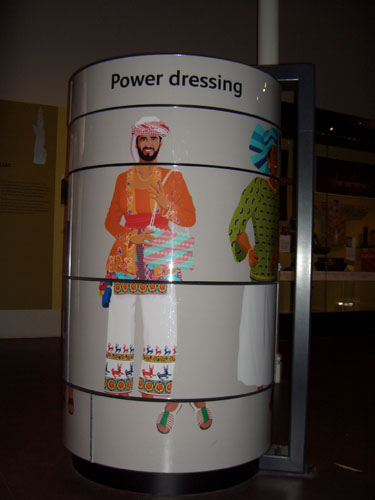When you visit the re-developed National Museum of Scotland, you may not think about how we came up with the interactive exhibits in the galleries. But, if you visited the museum in the summer of 2009, you may have been approached by museum staff with rough cardboard mock-ups and asked to help us test our ideas.
Those who haven’t seen this process in action might find it hard to imagine so here are just a few examples of the process of paper ‘mock-ups’, taken from the World Cultures galleries.
Family Belongings
This interactive can be found in the Patterns of Life gallery. It started with some wonderful photographs we found, in a book called ‘Material World’ by Peter Menzel. The photographs show families from around the world outside their homes with all their possessions. The working title for the ‘Patterns of Life’ gallery was ‘People and Possessions’ and so the photos felt like a very good fit. We sought permission to purchase the rights to use the images and were granted.
Next, we felt that the exhibit would really benefit from an active way in which visitors could discover the images, and also place them in a geographical context. So I bought a large geopolitical wall map and inserted some of the images into the map behind flaps. We tested this on gallery with our visitors and it proved to be extremely popular with families.
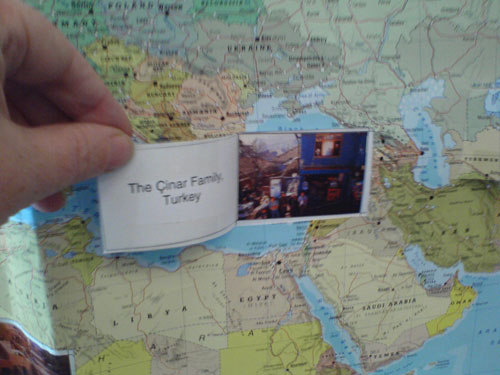
The next problem was what kind of map to actually use in the gallery. We noticed in our testing that visitors really enjoyed looking at a reasonably detailed map showing the location of countries they had visited or heard about or read about. We felt strongly that our map, while simplified, had to retain that level of detail.
The gallery Patterns of Life is divided into four regions – Africa, Asia, Middle East and Americas. Each area in the gallery has a colour, and so to link this exhibit with the rest of the galleries we used the same colours in our map.
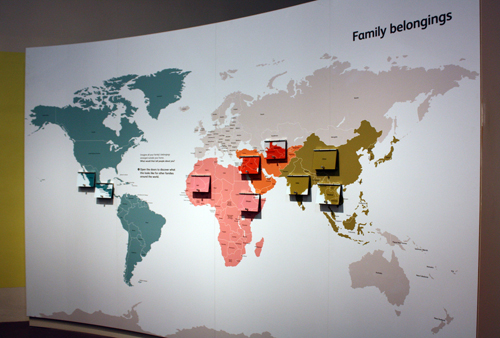
How would you use a shield?
This interactive in the Living Lands gallery went from this:
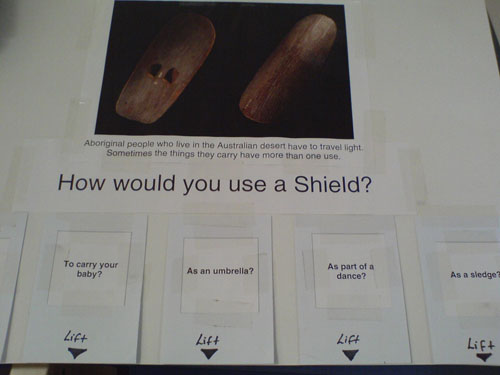
To this:
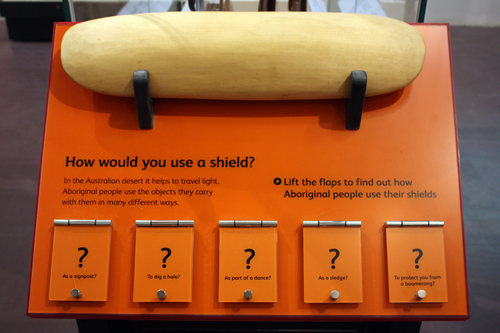
You can see with this exhibit that we were almost there at paper-prototype stage. This exhibit sits in the section about the traditional lifestyle of the Australian Aboriginal people, and looks at how nomadic people can have many uses for one object. It sits beside a showcase display of shields from the museum’s collections.
Power Dressing
Back in the Patterns of Life gallery, there is a series of cases about costume and dress. The cultural elements of how we dress to communicate gender, religion, status and many other subtle messages are very complex. We wanted to introduce an exhibit here for children, to allow them to look in a fun way at people’s traditional dress around the world.
Starting with ideas from children’s games and books about dressing figures in different costumes, we eventually decided to test a simple matching game where the figures would be split into heads, torsos, legs and feet.
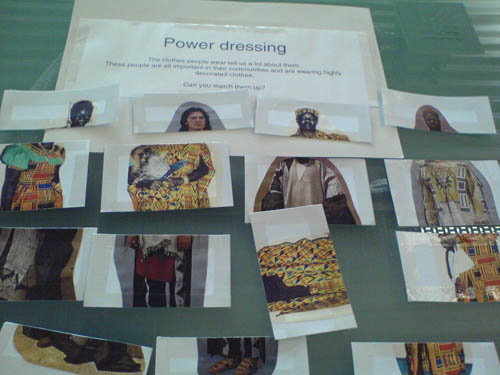
This proved to be a successful and fun activity for families visiting the museum. It’s a very simple idea, but the next challenge for this exhibit was in getting the illustrations right. Our curators did lots of research for each of the figures we wanted to use and gathered a series of reference photos for the illustrator to work from. After many versions, we were eventually happy with each figure.
The final challenge was to getting a structure that was stable enough, easy to turn and safe for little fingers and yet still elegant to fit with the gallery design.
I’m very pleased with the result; I hope visitors enjoy it too.
